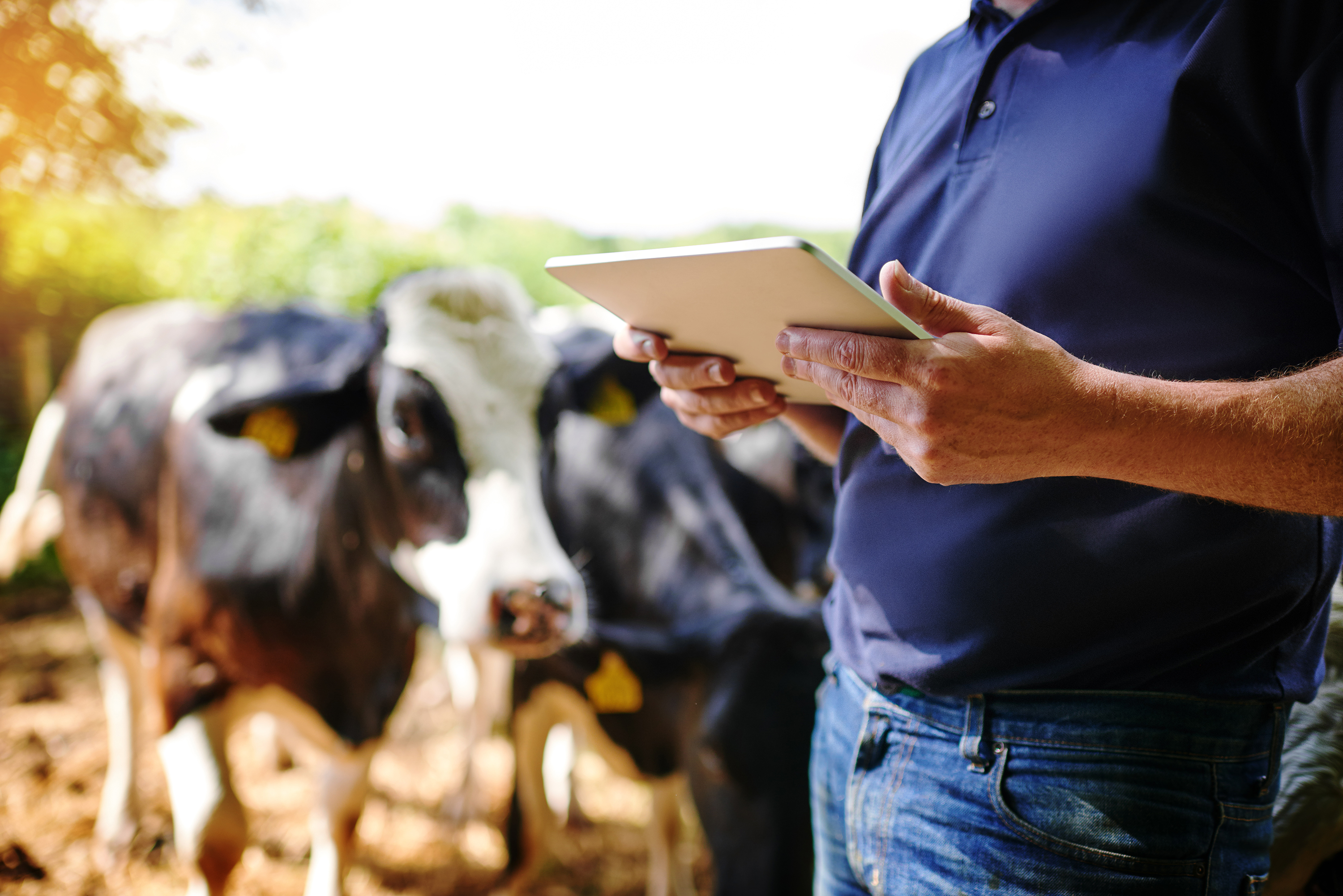As dairy technology advances, the data mountain gets bigger. Parlor systems, feeding programs, activity monitoring systems, environmental programs and more all have software programs that collect daily data. It is important data that can provide insights into opportunities to make the operation of your dairy more efficient.
There is so much data created on a dairy, however, that it is easy to be consumed by the sheer volume. You could literally spend hours each day poring over spreadsheets and reports to find the right nugget of information that will help you make an important decision.
Make sense of data collection
I recently had the chance to visit with Mark Wustenburg, a veterinarian who works with several large dairies to integrate systems and identify opportunities to manage streams of data. Here are a few points he suggests as producers try to make sense of all the data created every day on a dairy.
- Start simple. You have just added an activity monitoring system, and you are integrating that with the parlor system you put in six months ago. Soon, you will be using a feeding management system. Yes, there is too much information, and trying to make sense of it all can be a daunting task. This is especially true when something changes – either you add more cows, change information systems, upgrade technology or some other factor creates more information. By the way, this challenge happens with any business that grows and goes through change. The ones that do it successfully are able to condense data into manageable forms that are actually useful. Begin with something you know, like milk quality. For example, identify the information you need to track milk quality performance, figure out how to access it, then identify ways to share that with the right people. Then move on to the next opportunity.
- Ask the right questions. As your dairy scales up, or as you change or upgrade technologies, you may not necessarily know what information is available or which pieces of data you need. That is when you have to ask the question: What do I really need? That is a question that no one else can help you with. There is a process that you need to go through when making those changes to figure out what data is important to you and how you are going to use the information. Once you have identified those questions, then you need a focused approach to getting to the data you need without getting distracted. This challenge doesn’t just pertain to senior management. You have different layers in your management structure. One layer may work directly with cows, another may just manage people. Still another layer may be focused solely on managing the business. What questions are you trying to answer at each level of your business? When you understand the questions, you can collect the right information to form accurate answers.
- Get the right data to the right people. Your different management layers also need different pieces of data. Those who work closely with cows need more individual cow information. Mid-level managers need more population-based data to track cow and people performance over time. Those in upper management need more information related to performance across the cow population to make better broad-based business decisions.
It is also important to ensure integrity in the data you collect. The technology needs to work consistently and be robust enough to give consistently adequate accuracy without an inordinate amount of babysitting.
Is data analysis worth your time?
As an owner of a business, is it the best use of your time to analyze herd management information rather than focusing on operating your business? There comes a point where it becomes sound business strategy to designate someone to oversee the technology on the dairy. This person would fill a strategic need on the dairy and be responsible for ensuring a positive return on your technology investments.
This person could be considered your chief technology officer (CTO). In non-farm businesses, the CTO oversees the entire information technology department and is responsible for integrating business needs into planning and operations. In other words, they can be responsible for the following:
- Integrating systems. Unlike other businesses, there is no standardized programming language for data created on a dairy. The data created by the parlor system may be in a different format than what the feeding program provides, which could be different than the activity monitoring system. It is important to be able to integrate this data together to make more informed decisions.
- Streamline analytics. The CTO could set up and create reports that each management layer needs to perform their tasks or make management decisions. These could be daily task lists, monthly or quarterly performance reports and yearly analysis reports with metrics on how the dairy is performing over time.
- Training management groups. It is important for different management or employee teams to understand how to use equipment to ensure data is captured and used properly. For example, some systems use mobile devices to input data which requires different training than a system that would require paper-based recording and further data input.
- Keeping systems current and secure. Each software program will have updates and changes, and a CTO could make sure programs are kept up to date. Also, data security is a big issue and needs to be considered when determining the technology a farm will depend on.
It is important to also realize that a CTO may not necessarily be an information technology (IT) person who is directly related to managing the hardware and software you have on the dairy. That person may not understand the processes or data needs on a dairy and, likewise, the CTO may not know how to manage the computers in the office. It is crucial for the business that the CTO role isn’t neglected by the need to fulfill other responsibilities.
As dairies grow, you need to be able to make the right decisions to manage all its aspects. Technology certainly feeds that ability to make accurate and impactful decisions. But the dairy business is also competitive. In order to stay abreast – or surpass – your competition, you need to effectively manage data to continue to make the most of your resources. Technology delivers the information you can leverage to make your dairy more productive and efficient.










